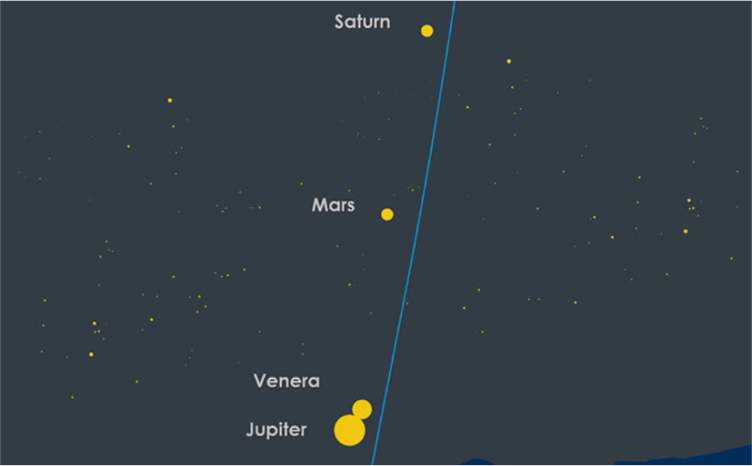Labor Day planet conjunction

Not so long ago, Labor Day was a “must have” event to be celebrated. Today, it is a somewhat faded scrapbook of the efforts of the ordinary, normal, working population and their household to ensure their human needs through their work. But…
Jupiter and Venus as one
The heavens have not forgotten us, though.
In fact, the brightest planets of the solar system, Jupiter and Venus have prepared a great event for us. It happens on May 1, an hour before sunrise over the eastern horizon. We call it the conjunction of planets.
The Sun rises on the first day of the fifth month of this year at 05:54. Jupiter comes out at 04:29 and Venus at 04:31.
This is just quite enough that around 05:00, low over the eastern horizon, which will change from darkness to morning shades of dark blue, we see these two planets paired with each other.

They will be seemingly very, very close. At times it may seem to us that they are one.
Just as it seemed to us at times not so long ago that workers and employers would be one. In the case of workers and employers, this did not work, and the planets show us with this rare celestial scene how this is still possible.
Therefore, do not miss the early May morning look to the east. Heaven gives an overture to a beautiful and important holiday with its cool performance above our heads. Of course, this is true for those who wake up early as well as for those who come home just at dawn.
Mercury elongation
Elongation is the angular distance of a body from the Sun. For celestial observers, this is an interesting fact because the farther an object is from the Sun, the easier it is to observe it.
The sun’s rays, of course, obstruct our view of celestial objects, so even though they are above us, we do not see them during the day.

Mercury is always close to the Sun, so we use the opportunity when it is in the greatest elongation to observe it.
At the end of April and start of May, Mercury is at 20.6 degrees away from our star, and because of that distance, it is the best day of the whole year to observe this small planet.
It will be better if you observe Mercury through a telescope or binoculars – but you must be absolutely sure that the Sun has already set for the horizon because it is dangerous for sight. Don’t experiment with that.
The closer Mercury is to the horizon, the light coming from it passes through the denser layers of the Earth’s atmosphere.
That is why Mercury, like other celestial bodies, should be observed when they are in the sky as much as possible. When the sun sets, Mercury will be about 16.5 degrees from the horizon.
And on the same day, Mercury will be very close to the Pleiades, and that is a very beautiful sight.
On the second of May, a real heavenly treat awaits us: a sharp crescent moon, Mercury and again the Pleiades.
Pro tip: It is best to observe the whole scene through binoculars because it has a wide field of view.
Want to read more about the universe? Visit our blog!

